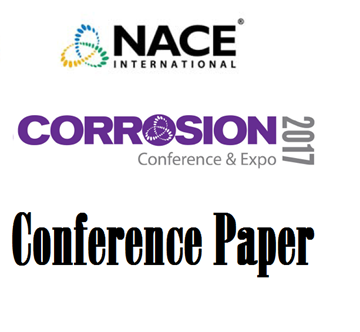Search
NACE Conference Papers
View as
Sort by
Display
per page
Fitness For Purpose Evaluation Of Hydrogen Production Unit Centrifugally Cast Tubes: “Post Exposure” Metallographic And Mechanical Test
Product Number:
51321-16609-SG
Publication Date:
2021
$20.00
Fitness-for-Purpose HIC Testing of Heavy Wall Large-Diameter Pipes for Mildly Sour Applications in the New NACE TM0284-2016 Solution C
Product Number:
51317--8881-SG
ISBN:
8881 2017 CP
Publication Date:
2017
$20.00
Fitness-for-Purpose Research of OCTG for Underground Gas Storage Applications in H2/CO2 Environments
Product Number:
51320-14698-SG
Publication Date:
2020
$20.00
Flexible Coatings for Marine Immersion Applications
Product Number:
41205-187-SG
Publication Date:
2005
$20.00
Flow Accelerated Corrosion of Welded Small Bore A106 Carbon Steel Pipe
Product Number:
51315-5980-SG
ISBN:
5980 2015 CP
Publication Date:
2015
$20.00
Flow Induced Corrosion of Steels Exposed to Pulping Liquors
Product Number:
51315-5972-SG
ISBN:
5972 2015 CP
Publication Date:
2015
$20.00
Flowline Material Performance and Challenges in Oil and Gas sweet and sour environment
Product Number:
51320-14722-SG
Publication Date:
2020
$20.00
Forensic Evaluation of Long-Term Galvanic Cathodic Protection of Bridge Pilings in a Marine Environment
Product Number:
51320-14485-SG
Publication Date:
2020
$20.00
Formulation Of Corrosion Inhibitors Using Design Of Experiment (DOE) Methods And Discovering Highly Performing Inhibitors By High Throughput Experimentation (HTE) Methods Using Critical Micelle Concentration
Product Number:
51321-16994-SG
Publication Date:
2021
$20.00
Fracture Failure Analysis of Type HL Sucker Rod in H2S-CO2 Environment
Product Number:
51320-14649-SG
Publication Date:
2020
$20.00
Fracture Toughness Evaluation of Precipitation Hardened Nickel Alloys Under Cathodic Polarization Environments
Product Number:
51319-12849-SG
Publication Date:
2019
$20.00
Fracture Toughness of Wrought Copper Beryllium Alloy in Seawater with Cathodic Protection Condition for Subsea Applications
Product Number:
51319-13010-SG
Publication Date:
2019
$20.00












